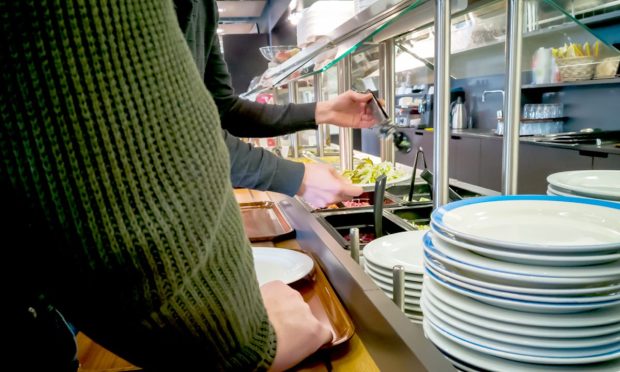Discover Partners With Campus Dining Solution Phood in Bid to Cater to Gen Z’s Digital Food Habit

Having grown up in the digital age, today’s college students expect more flexibility and convenience from their dining options than previous generations. Seizing on this demand, banking and payment services company Discover announced on Wednesday (Sept. 29) that it is partnering with student meal plan solution Phood to create a prepaid card that will allow students to shop from off-campus vendors in the same way they shop from on-campus providers.
Students will be able to use the Phood Discover card to access their campus dining meal along with flex plan dollars, which students can use at restaurants, grocery stores or convenience stores, or to order meal delivery through third-party services. Spending is managed through a mobile app. The program is launching at three colleges and universities, with more colleges to come throughout the academic year.
“Throughout the COVID-19 pandemic, how we order and where we eat food has changed,” Jason Hanson, senior vice president of global business development at Discover, said in a prepared statement. “As they return to campus, students may be excited to eat at restaurants that have been closed for a while or may prefer ordering food rather than sitting in a crowded cafeteria. This new program gives them options while not spending money beyond their existing meal plan.”
The Context
In today’s connected economy, businesses that can reduce friction along the path to purchase by integrating commerce into consumers’ existing routines stand out. Students who already access their meal plan multiple times a day through one payment system may find it easier to begin ordering from restaurants if they don’t need to find a separate way to, say, ask their parents to pay for delivery as well.
The demand is there, with students who have lived through quarantine now accustomed to digital ordering channels. Campuses are getting digitized with everything from dining hall ghost kitchens to food-producing robots to autonomous delivery. Today’s students expect digital technologies to play a central role in how they get their food.
See also: Old-School Campus Cafeterias Get Connected Economy Upgrade
By the Numbers
PYMNTS research finds that college-aged consumers are among the most likely consumers to order restaurant food online. In a census-balanced survey of over 5,200 consumers published in the PYMNTS report “The Bring-It-to-Me Economy,” created in collaboration with Carat from Fiserv, three-quarters of Gen Zers reported that they order restaurant-made food online, compared to just 61% of the overall population.
Related news: QSRs’ Lagging Loyalty-Reward Investment Hurts Innovation and Sales
Additionally, 55% of Gen Zers indicated that they are ordering food from restaurants using third-party aggregators more often than they were before the initial outbreak of the pandemic, compared to less than half (46%) of those surveyed.
What the Experts Are Saying
Digital technologies have become the norm no matter how consumers are ordering from restaurants, and young diners are at the forefront of this shift.
“For consumers, ordering online or directly from the restaurant is a familiar behavior that has [recently] been made easier by the innovations that restaurant software platforms have enabled,” PYMNTS CEO Karen Webster wrote earlier this year. “Restaurant operators realize the power of digital, and want to keep it in the mix across the entirety of the restaurant journey – for food ordered online for pickup or delivery and at the table – to make the restaurant ordering experience more satisfying and within the guest’s control.”
And this shift is here to stay.
“We’re at one of these inflection points where people are asking ‘what’s going to happen in the future?’”Andrew Robbins, co-founder and CEO at Paytronix, said in an interview with Webster. “Because one could imagine that with a return to [on-premise dining], online ordering should go down. What we’re seeing in our numbers is that it’s part of some people’s lifestyle that they would like to keep.”
Read more: The Instacart Way to Innovating in the Connected Economy
And also: Paytronix CEO: Restaurants Are Reopening, But Digital Ordering Is Here to Stay
